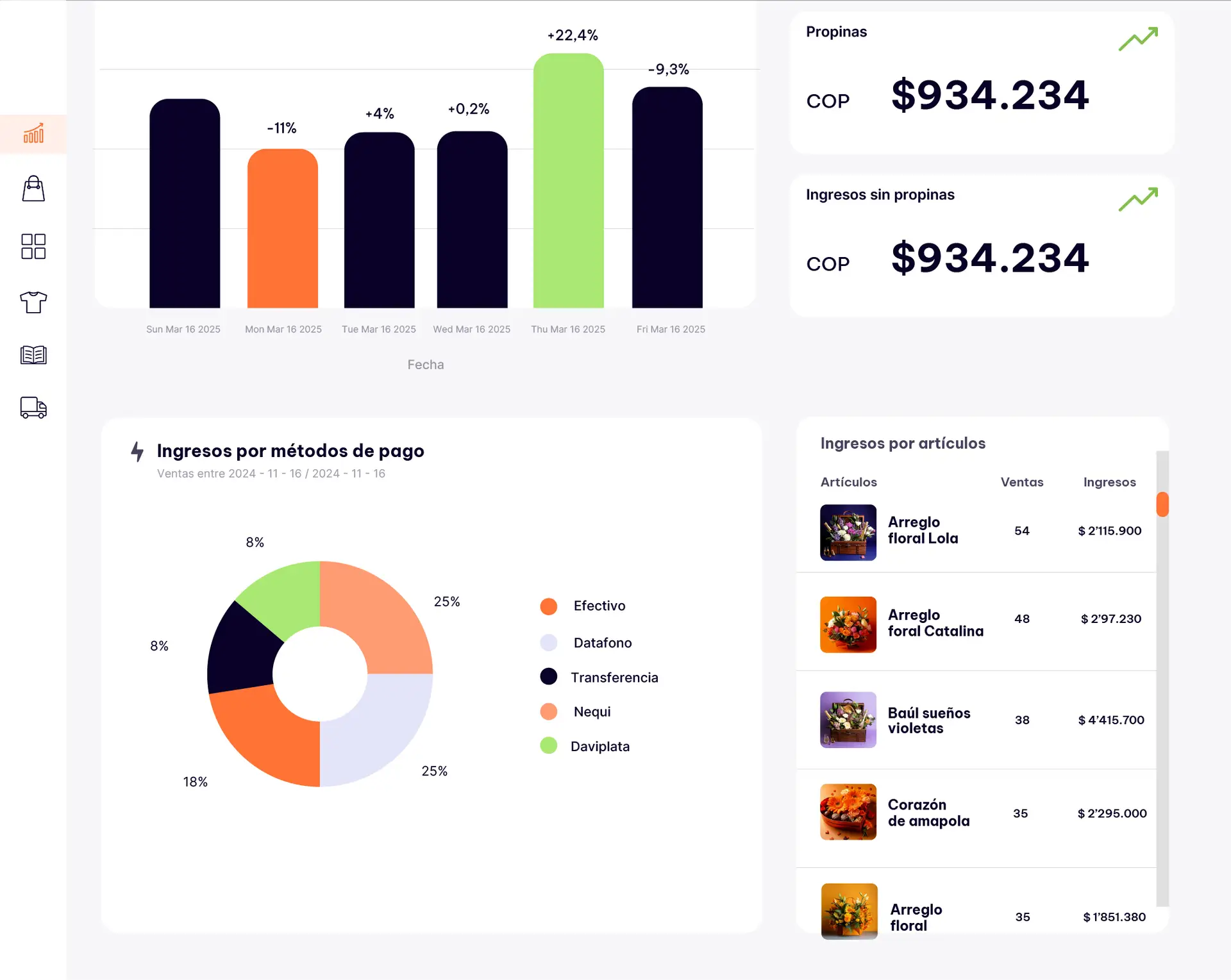Introduction: Structure That Sets You Free
Running a store means juggling a thousand little things — pricing, inventory, customer service, cleaning, team management, and more. Every week feels like a race. Some days, you feel productive. Others, like you’re just spinning in circles.
If you’ve ever ended the week exhausted, yet unsure what you actually accomplished… you’re not alone.
The truth is, most small retailers operate reactively. They solve problems as they appear, chase tasks as they come up, and survive the week rather than manage it.
But what if you had a rhythm?
A structure.
A system that helped you stay on top of things — without chaos?
That’s what a weekly store checklist can give you.
It’s not about micromanaging every moment. It’s about having a short, focused review that helps you catch issues early, make adjustments fast, and grow with confidence.
Because smart retail doesn’t mean doing everything perfectly — it means doing the right things consistently.
This article will walk you through a five-part weekly checklist designed to help you:
- Monitor the health of your store
- Improve performance without guesswork
- Stay aligned with your business goals
- Reduce surprises and last-minute scrambles
Whether you run your shop solo or have a team, this system can adapt to your flow.
Let’s dive in — and start with the one thing you should never skip: checking your sales numbers in context.
1. Weekly Sales Overview: What’s Going Up or Down?
You probably check sales every day — but weekly reviews reveal bigger patterns. A single slow day doesn’t matter much. But a week of lower sales in a key category? That’s a signal.
Why it matters:
- Weekly patterns help you plan ahead
- You spot wins or declines in categories, times, or teams
- It keeps your focus strategic, not reactive
What to review:
- Total revenue this week vs. last week
- Sales by category (e.g., snacks, cosmetics, books)
- Average ticket size
- Best-selling and slowest products
- Sales by channel (in-store, WhatsApp, online)
Look for trends, not just numbers:
- Did a new promotion work?
- Did weather or events impact traffic?
- Is a product slowly declining?
Real-world example:
María runs a convenience store. During her weekly review, she sees snack sales down 15% for the second week. Turns out the display was moved behind a pillar. She repositions it — and sales return to normal.
Practical Exercise:
Every Monday, compare last week’s numbers to the one before. Note 1 win and 1 concern. Decide on 1 action (e.g., move display, push bundle, adjust hours). Keep it in a simple tracker or notebook.
2. Inventory Check: What’s Low, What’s Stuck?
Inventory isn’t just about avoiding stockouts. It’s about understanding what’s moving, what’s stuck, and how your money is flowing through your shelves.
Why it matters:
- Too much inventory = money sitting still
- Too little = missed sales and unhappy customers
- Weekly checks prevent overreactions and blind spots
What to check weekly:
- Low-stock items (especially top sellers)
- Overstocked items (slow movers tying up cash)
- New arrivals — are they selling?
- Expiring products (if applicable)
Tip:
Use color codes: Red (urgent restock), Yellow (watch), Green (stable). This visual system speeds up decision-making.
Real-world example:
Kevin manages a bakery. During his weekly review, he sees cake decorations aren’t moving. He bundles them into “celebration kits” with candles and cards. They sell out in a week — and free up shelf space.
Practical Exercise:
Pick 10 products each week: 5 best sellers, 5 slow movers. Note their current stock and sales. Ask: Do I need to restock, repackage, promote, or remove? Make one small inventory action by Friday.
3. Promotions & Marketing Review: What’s Working?
You put energy into WhatsApp messages, Instagram posts, or in-store signs. But are they working?
A weekly marketing review helps you double down on what drives results — and stop wasting time on what doesn’t.
Why it matters:
- You align content with performance
- You learn what actually drives traffic and sales
- You stay proactive instead of always “posting something”
What to review weekly:
- Promotion of the week: sales vs. goal
- Instagram/WhatsApp: best-performing post
- Foot traffic by day (before/after a campaign)
- Customer engagement (comments, replies, shares)
- Any direct mentions (“I came for the Monday deal!”)
Don’t forget timing:
If a campaign worked, note what day/time you posted it. Consistency matters more than creativity.
Real-world example:
Lucía owns a beauty shop. After reviewing her content, she notices that her “3-product routine” videos lead to more sales than product photos. She shifts strategy — and her average order size jumps.
Practical Exercise:
List your 3 top-performing posts, promotions, or campaigns from last week. What do they have in common? Pick one thing to repeat or optimize this week.
4. Team & Operations Review: What Needs Support?
Even small teams need systems. A weekly review of how your team is doing and how operations are running keeps your store healthy — and your people motivated.
Why it matters:
- Prevents miscommunication and burnout
- Surfaces small issues before they grow
- Builds a culture of shared responsibility
What to review:
- What went smoothly this week?
- What issues came up (late deliveries, errors, customer complaints)?
- Team performance (sales, attitude, attendance)
- Staff needs (support, training, recognition)
If you work alone:
Still ask these questions — about your tools, vendors, systems. You are your own team.
Tip:
Use a whiteboard or WhatsApp group to gather staff notes during the week. Then review together on Fridays or Mondays.
Real-world example:
Ana runs a fashion store with two assistants. She notices one of them is struggling with returns. In their Friday review, they create a 3-step cheat sheet. Errors drop 90%, and confidence rises.
Practical Exercise:
Write down one process or routine that caused friction this week. Ask: Can I improve this? Simplify it? Document it? Make one small adjustment — and review the result next week.
5. Strategy Check-In: Are You Still Aligned?
Retail can pull you in many directions. A weekly strategy check keeps you grounded and helps you lead with intention — not just momentum.
Why it matters:
- Keeps your store aligned with your goals
- Reminds you why you started
- Helps you say “no” to distractions
Ask yourself (or your team):
- What was our main focus this week? Did we honor it?
- Did we move closer to our monthly/quarterly goal?
- What do we need to prioritize next week?
Bonus:
Write a one-sentence “theme” for next week:
“This week we focus on increasing basket size.”
“This week we fix the back room.”
“This week we test a new promo.”
Real-world example:
Pedro wants to grow online orders by 25% this quarter. His Sunday review shows they only sent 2 WhatsApp campaigns last week. He adjusts, schedules 3 ahead — and sees a 12% bump in online sales in 7 days.
Practical Exercise:
Take 10 minutes every Sunday. Write: 1) What moved us forward this week? 2) What distracted us? 3) What is next week’s focus? Keep answers in a notebook or doc to track your evolution.
Final Reflection: Structure Creates Freedom
Many store owners resist checklists. They want flexibility, flow, freedom. But the irony is this:
Real freedom comes from structure.
Structure gives you clarity.
It lets you breathe.
It frees your energy from chaos — so you can focus on growth.
A weekly checklist is not a burden — it’s a gift to yourself.
It helps you lead with data, not drama.
It turns experience into insight.
It transforms the ordinary into momentum.
No, you don’t have to be perfect.
You don’t have to track every number or fix every issue.
You just have to check in.
Ask the right questions.
Tweak the right things.
Repeat.
Over time, these small weekly rituals create big results:
- Better decisions
- Less overwhelm
- More consistency
- Clearer goals
- Happier teams
- And a stronger, smarter store
So here’s your move:
Pick one checklist item from this article.
Start this week.
Then build your own rhythm — one habit, one review, one action at a time.Because successful stores don’t just sell well.
They run well — week after week, with clarity and intention.





